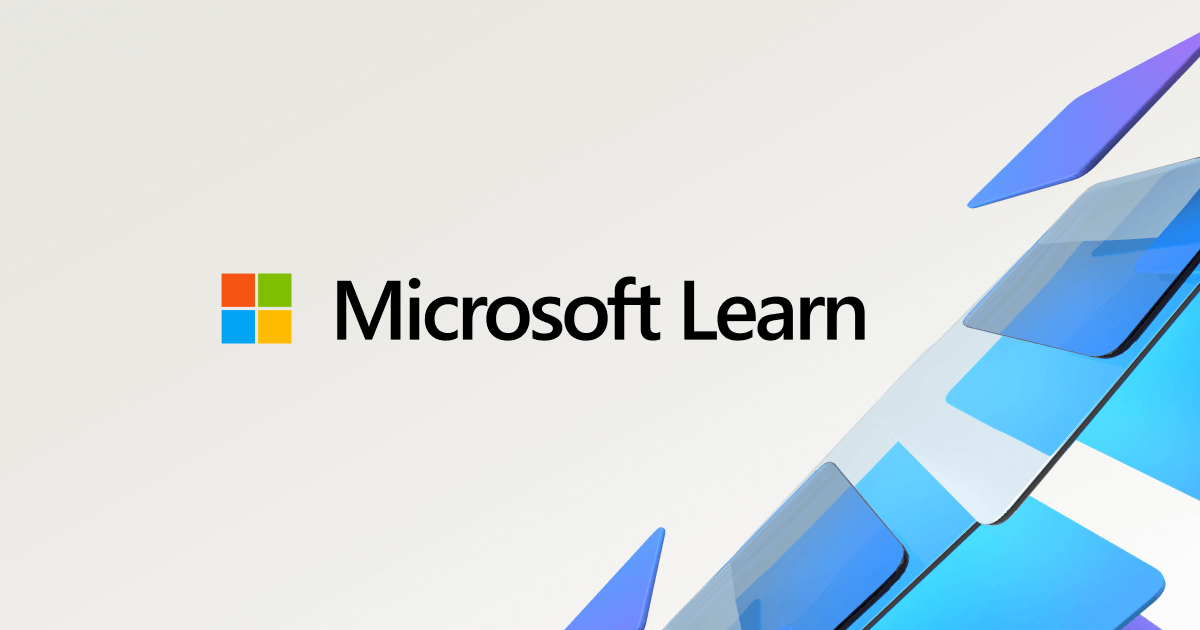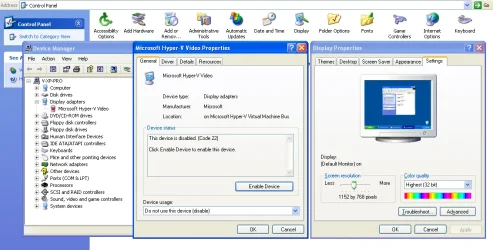I don't know when this started, it used to work properly, but for my XP VM in Windows 11 Pro 24H2 Hyper-V the pointer goes up when I move the mouse down (touchpad actually), and vice versa. Horizontal movements are correct. This problem has been seen before, this is one of many (unresolved) examples I've found.
It's the integration services that are at fault. There's nothing you can do in the host or the guest to fix this, unistalling and reinstalling drivers (host or guest) has no effect. There used to be a fix though in older versions of Hyper-V, you could install integration services in the guest from a virtual DVD.

The ISO used to be available to download from Microsoft, but that too has now been removed from Microsoft's servers.
However, I found it it the Internet Archive Wayback Machine. Insert it in the VM's DVD and installing it not only fixed my mouse issues, it also gave my XP a proper Microsoft Hyper-V Video driver, and no longer does the mouse get captured inside the VM's window and have to be released with Ctrl+Alt+left-arrow. Did the same magic for my Windows 7 VM too.

I downloaded vmguest.iso from here:
answers.microsoft.com | Hyper-V on Windows 11: Mouse Vertically Inverted in Virtual Machines Running Older Versions of Windows...the mouse movement (both using an external mouse and trackpad) is vertically inverted in machines running versions of windows older than Windows 10. Is there any fix for this? I've tried to uninstall and reinstall mouse drivers in the guest OS and restarting, but that did not fix this issue.
Mouse movement works correctly if the guest OS is Windows 10 or 11.
It's the integration services that are at fault. There's nothing you can do in the host or the guest to fix this, unistalling and reinstalling drivers (host or guest) has no effect. There used to be a fix though in older versions of Hyper-V, you could install integration services in the guest from a virtual DVD.
Microsoft said:For Hyper-V hosts earlier than Windows Server 2016 and Windows 10, you'll need to manually install or update the integration services in the guest operating systems.
To manually install or update the integration services:
- Open Hyper-V Manager.
- Connect to the virtual machine. Right-click the virtual machine and select Connect.
- From the Action menu of Virtual Machine Connection, select Insert Integration Services Setup Disk. This action loads the setup disk in the virtual DVD drive. Depending on the guest operating system, you might need to start the installation manually from File Explorer.
- After the installation finishes, integration services are available for use.

Manage Hyper-V Integration Services
This article describes how to turn Hyper-V integration services on and off, and install them if needed.
learn.microsoft.com
The ISO used to be available to download from Microsoft, but that too has now been removed from Microsoft's servers.
However, I found it it the Internet Archive Wayback Machine. Insert it in the VM's DVD and installing it not only fixed my mouse issues, it also gave my XP a proper Microsoft Hyper-V Video driver, and no longer does the mouse get captured inside the VM's window and have to be released with Ctrl+Alt+left-arrow. Did the same magic for my Windows 7 VM too.

I downloaded vmguest.iso from here:
My Computers
System One System Two
-
- OS
- Windows 11 Home
- Computer type
- Laptop
- Manufacturer/Model
- Acer Aspire 3 A315-23
- CPU
- AMD Athlon Silver 3050U
- Memory
- 8GB
- Graphics Card(s)
- Radeon Graphics
- Monitor(s) Displays
- laptop screen
- Screen Resolution
- 1366x768 native resolution, up to 2560x1440 with Radeon Virtual Super Resolution
- Hard Drives
- 1TB Samsung EVO 870 SSD
- Internet Speed
- 50 Mbps
- Browser
- Edge, Firefox
- Antivirus
- Defender
- Other Info
- fully 'Windows 11 ready' laptop. Windows 10 C: partition migrated from my old unsupported 'main machine' then upgraded to 11. A test migration ran Insider builds for 2 months. When 11 was released on 5th October 2021 it was re-imaged back to 10 and was offered the upgrade in Windows Update on 20th October. Windows Update offered the 22H2 Feature Update on 20th September 2022. It got the 23H2 Feature Update on 4th November 2023 through Windows Update, and 24H2 on 3rd October 2024 through Windows Update by setting the Target Release Version for 24H2.
My SYSTEM THREE is a Dell Latitude 5410, i7-10610U, 32GB RAM, 512GB NVMe ssd, supported device running Windows 11 Pro.
My SYSTEM FOUR is a 2-in-1 convertible Lenovo Yoga 11e 20DA, Celeron N2930, 8GB RAM, 256GB ssd. Unsupported device: currently running Win10 Pro, plus Win11 Pro RTM and Insider Dev, Beta, and RP 24H2 as native boot vhdx.
My SYSTEM FIVE is a Dell Latitude 3190 2-in-1, Pentium Silver N5030, 8GB RAM, 512GB NVMe ssd, supported device running Windows 11 Pro, plus Insider Beta, Dev, and Canary builds (and a few others) as a native boot .vhdx.
My SYSTEM SIX is a Dell Latitude 5550, Core Ultra 7 165H, 64GB RAM, 1TB NVMe SSD, supported device, Windows 11 Pro 24H2, Hyper-V host machine.
-
- Operating System
- Windows 11 Pro
- Computer type
- Laptop
- Manufacturer/Model
- Dell Latitude E4310
- CPU
- Intel® Core™ i5-520M
- Motherboard
- 0T6M8G
- Memory
- 8GB
- Graphics card(s)
- (integrated graphics) Intel HD Graphics
- Screen Resolution
- 1366x768
- Hard Drives
- 500GB Crucial MX500 SSD
- Browser
- Firefox, Edge
- Antivirus
- Defender
- Other Info
- unsupported machine: Legacy bios, MBR, TPM 1.2, upgraded from W10 to W11 using W10/W11 hybrid install media workaround. In-place upgrade to 22H2 using ISO and a workaround. Feature Update to 23H2 by manually installing the Enablement Package. In-place upgrade to 24H2 using hybrid 23H2/24H2 install media. Also running Insider Beta, Dev, and Canary builds as a native boot .vhdx.
My SYSTEM THREE is a Dell Latitude 5410, i7-10610U, 32GB RAM, 512GB NVMe ssd, supported device running Windows 11 Pro.
My SYSTEM FOUR is a 2-in-1 convertible Lenovo Yoga 11e 20DA, Celeron N2930, 8GB RAM, 256GB ssd. Unsupported device: currently running Win10 Pro, plus Win11 Pro RTM and Insider Dev, Beta, and RP 24H2 as native boot vhdx.
My SYSTEM FIVE is a Dell Latitude 3190 2-in-1, Pentium Silver N5030, 8GB RAM, 512GB NVMe ssd, supported device running Windows 11 Pro, plus Insider Beta, Dev, and Canary builds (and a few others) as a native boot .vhdx.
My SYSTEM SIX is a Dell Latitude 5550, Core Ultra 7 165H, 64GB RAM, 1TB NVMe SSD, supported device, Windows 11 Pro 24H2, Hyper-V host machine.








